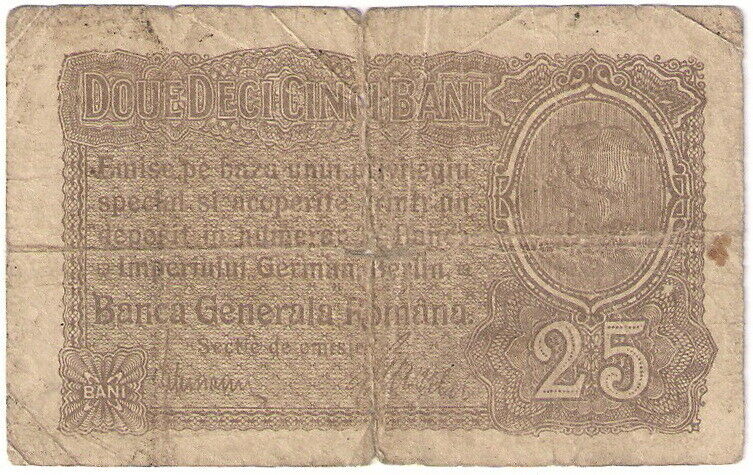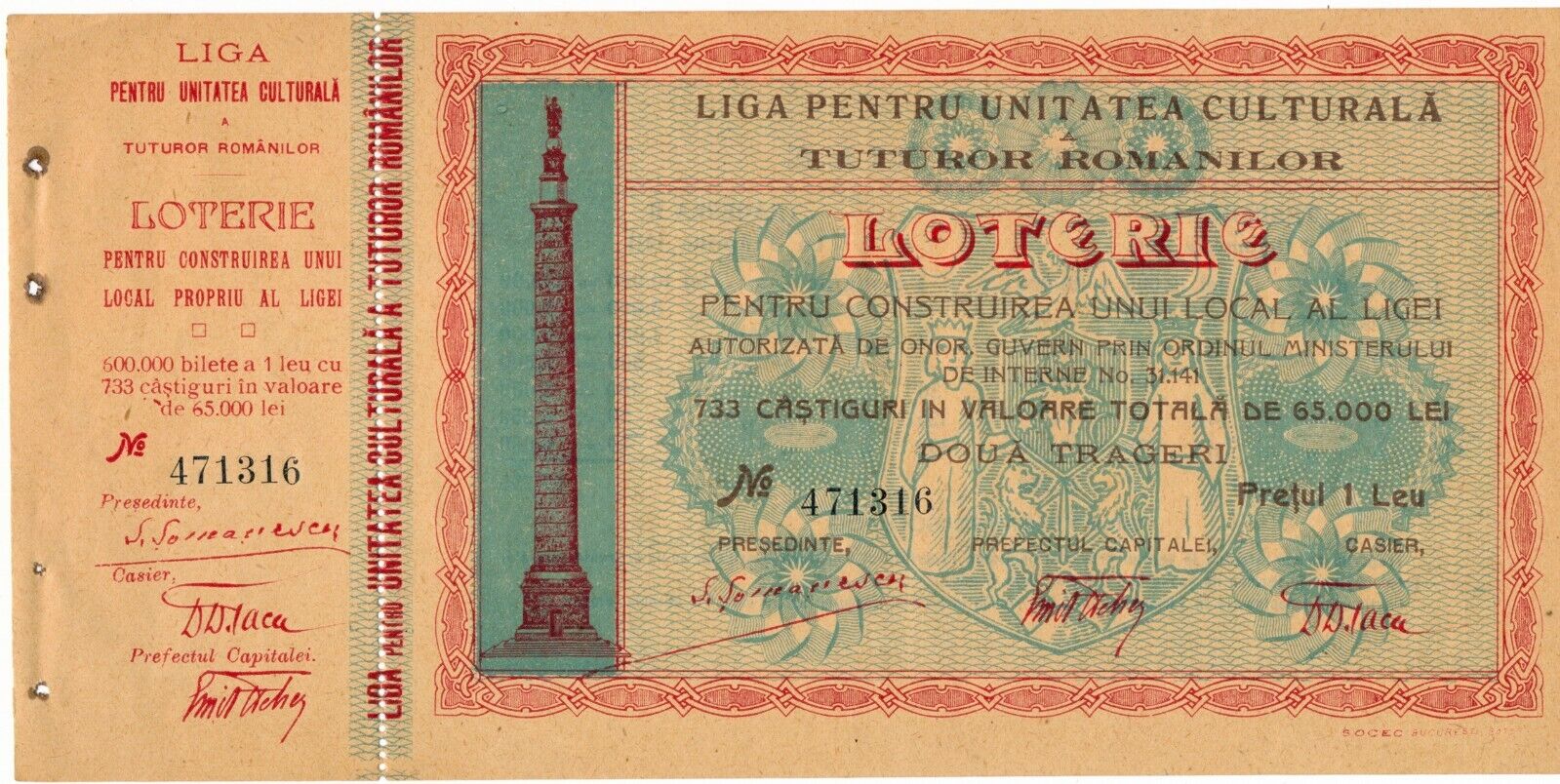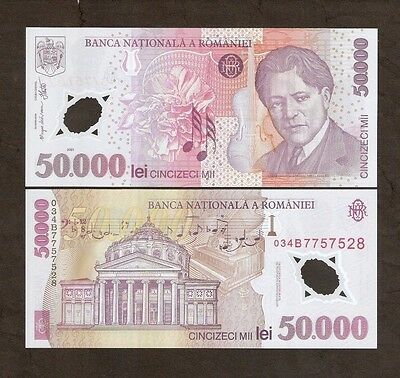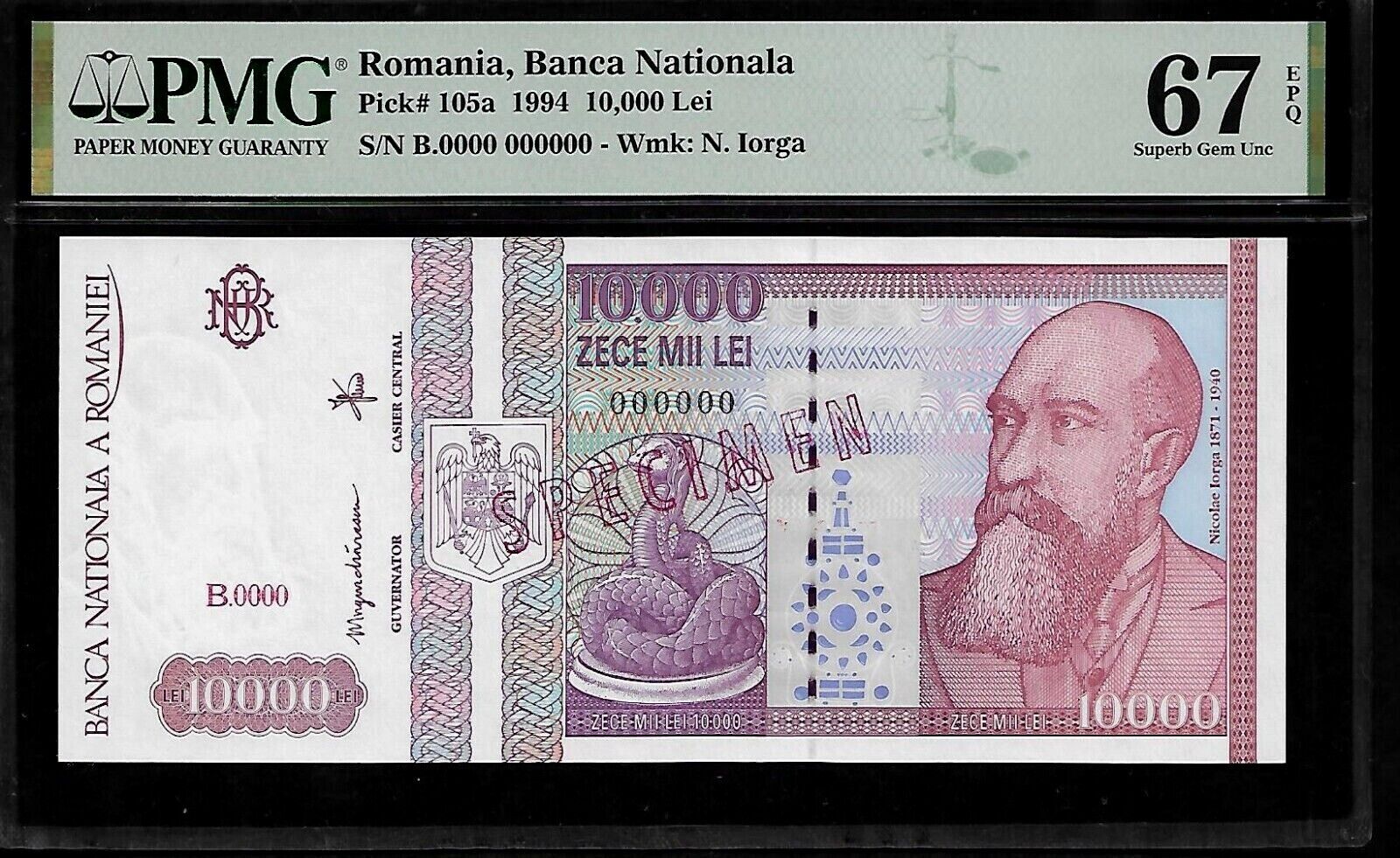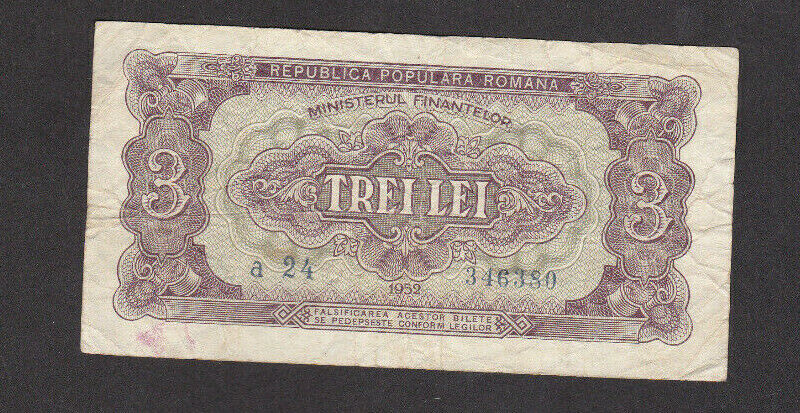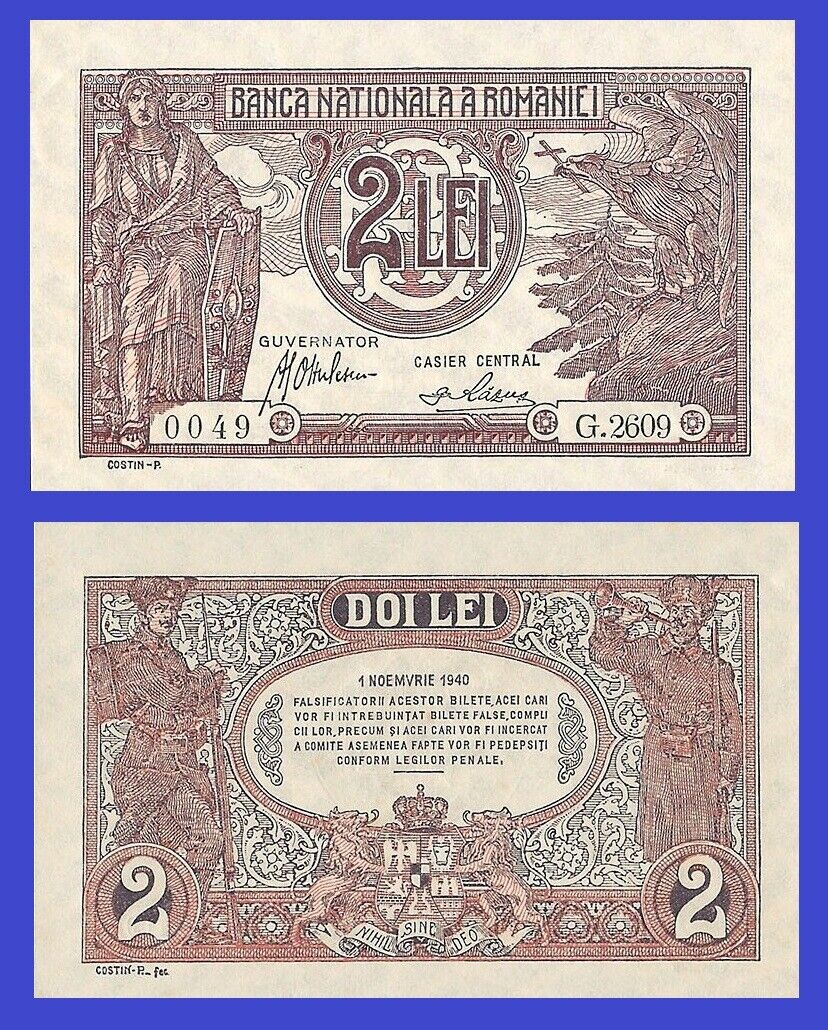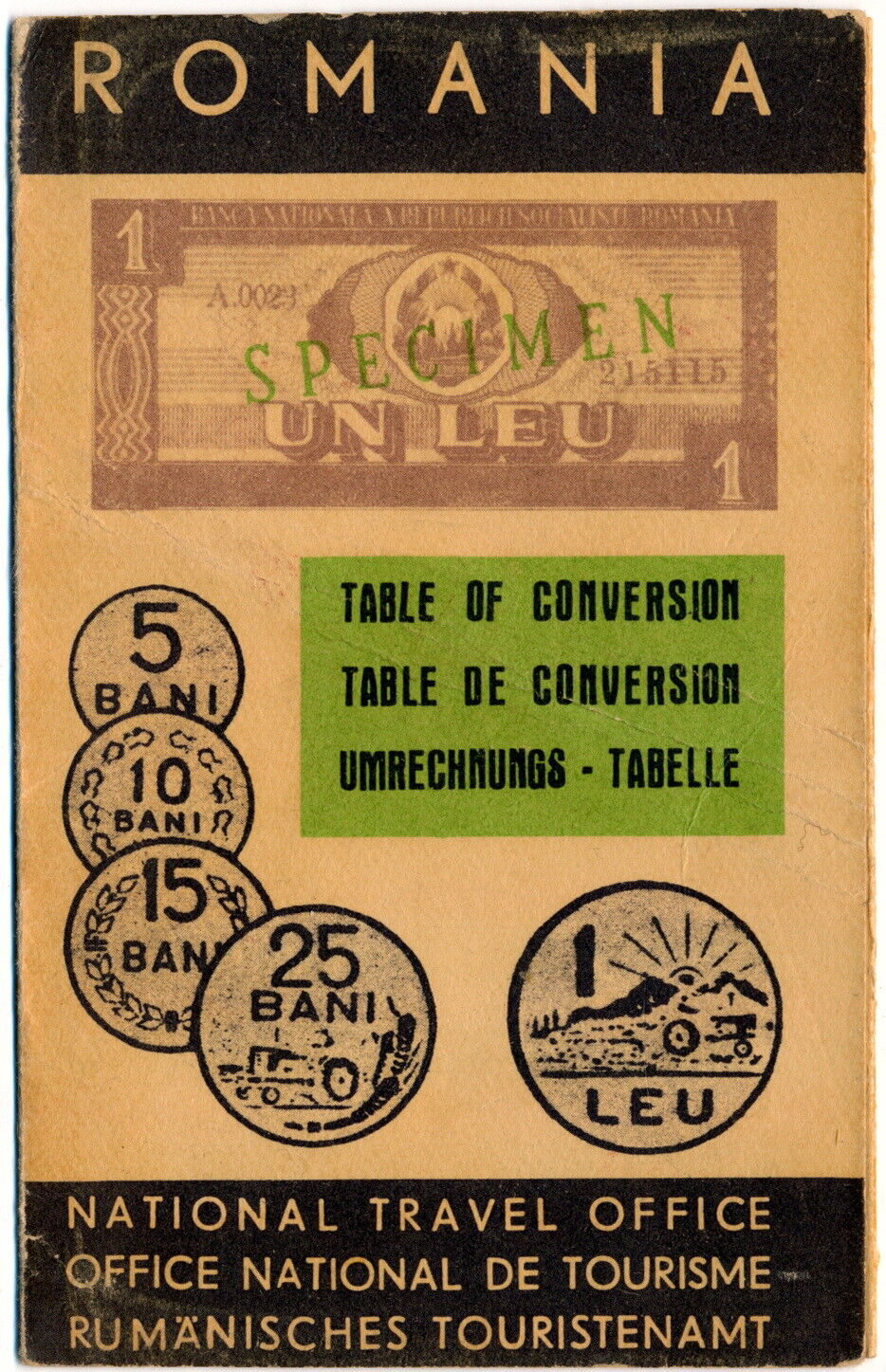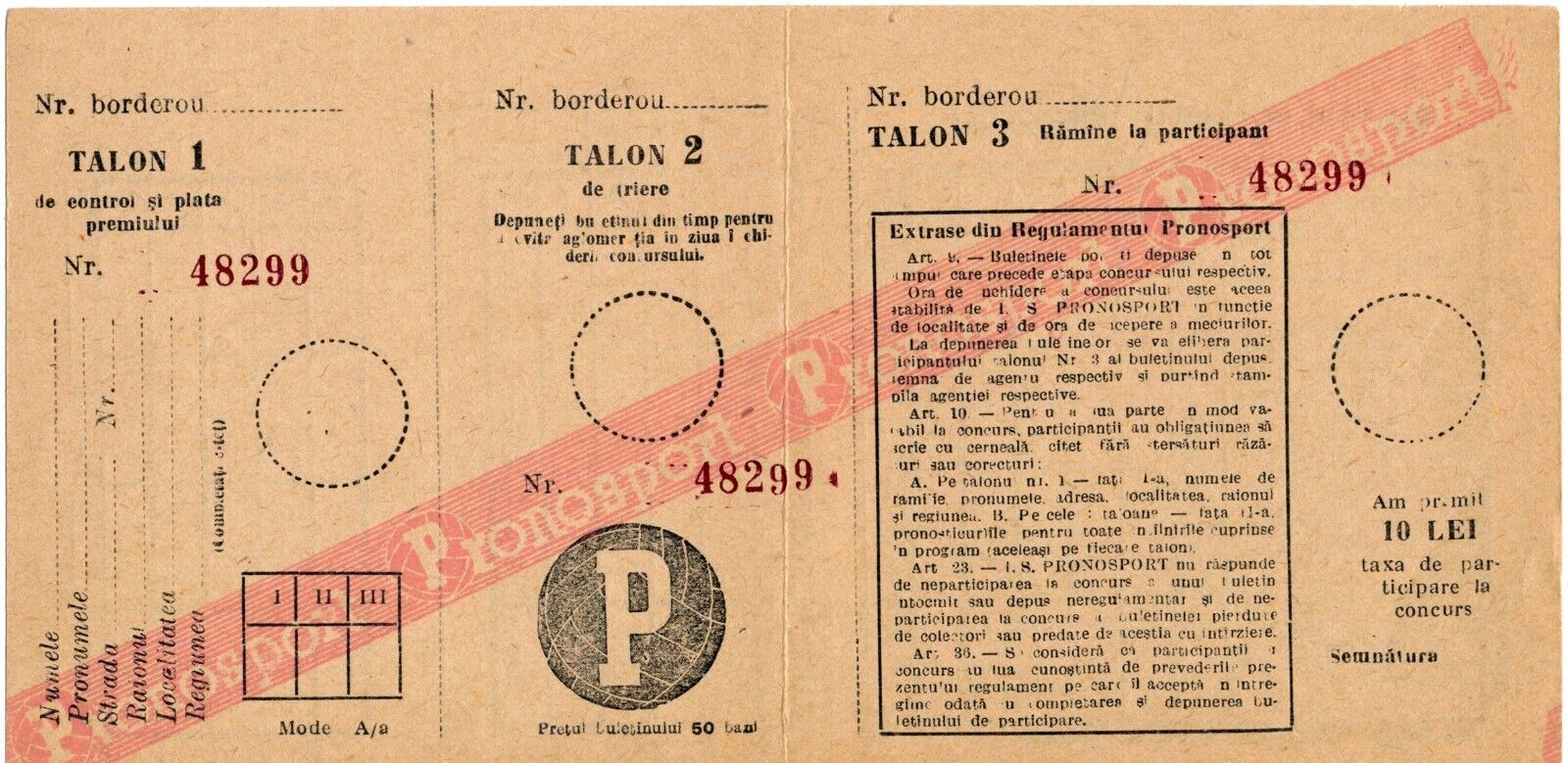-40%
Romania banknote - 25 bani - year 1917 - German occupation series - WW1
$ 7.91
- Description
- Size Guide
Description
The Romanian leu, Romanian Lion is the currency of Romania. It is subdivided into 100 bani. The word "bani" is also used for "money" in the Romanian language.First leu
In 1877, state notes were introduced in denominations of 5, 10, 20, 50, 100 and 500 lei. In 1880, these notes were overstamped for issue by the Banca Națională a României, which began to issue regular notes in 1881 in denominations of 20, 100 and 1000 lei.
In 1914, 5 lei notes were reintroduced, followed by 1 and 2 lei notes in 1915 and 500 lei in 1916. The Ministry of Finance issued very small sized notes for 10, 25 and 50 bani in 1917. 500 lei notes were introduced in 1940, followed by 10,000 and 100,000 lei in 1945 and 1 and 5 million lei in 1947. In 1945, the Ministry of Finance issued 20 and 100 lei notes to replace those of the National Bank's.
Romania during World War I was a small nation of 9,000,000 people in 46,000 square miles of territory, and was neutral for the first two years of the war. It had the only oil fields in Europe, and Germany eagerly bought its petroleum, as well as food exports. King Carol favored Germany but after his death in 1914, King Ferdinand and the nation's political elite favored the Entente. For Romania, the highest priority was taking Transylvania from Hungary, with its 3,000,000 Romanians. The Allies wanted Romania to join its side in order to cut the rail communications between Germany and Turkey, and to cut off Germany's oil supplies. Britain made loans, France sent a military training mission, and Russia promised modern munitions. The Allies promised at least 200,000 soldiers to defend Romania against Bulgaria to the south, and help it invade Austria.
The Romanian campaign was part of the Balkan theatre of World War I, with Romania and Russia allied with Britain and France against the Central Powers of Germany, Austria, and Turkey. Fighting took place from August 1916 to December 1917 across most of present-day Romania, including Transylvania, which was part of the Austro-Hungarian Empire at the time, as well as southern Dobruja, which is currently part of Bulgaria.
Despite initial successes, the Romanian forces (aided by Russia) suffered massive setbacks, and by the end of 1916 only Moldavia remained. After several defensive victories in 1917, with Russia's withdrawal from the war following the October Revolution, Romania, almost completely surrounded by the Central Powers, was also forced to drop out of the war; it signed the Treaty of Bucharest with the Central Powers in May 1918. On 10 November 1918, just one day before the German armistice and after all the other Central Powers had already capitulated, Romania re-entered the war. By then, about half the 750,000 Romanian soldiers were dead.
German Occupation Series
During The Great War, Romania was allied with Great Britain and Russia. After signing a treaty with the Allies on August 17, 1916, they declared war on the Central Powers on August 27, 1916 and entered the war in an attempt to seize Transylvania, a historical province where the population was predominantly Romanian.
The Allied front collapsed after the Bolsheviks came into power in Russia and withdrew from the war. Romania was occupied by the Germans in late 1916 and 1917. This banknote was issued in Romania by the Banca Generala Romana under German Occupation during World War I.
These are relatively rare German occupation of Romania military issue banknote from 1917. Shown are the 25 Bani, 50 Bani, 1 Leu (P M4), 5 Lei (P M5), 20 Lei (P M7) and 1,000 Lei (P M11) banknotes. 100 Banis equals 1 Lei.
The translation from Romanian to English on the 5 Lei Romanian banknote is as follows:
Issued under a special privilege and covered by a cash deposit at Bank of the German Empire, Berlin.
General Romanian Bank
At the end of the First World War, four distinct types of currency circulated in Romania. The lion (leu) by the Romanian National Bank, the leu by the Romanian General Bank, the crown by the Austro-Hungarian bank and the Russian ruble. These banknotes were destroyed on November 16, 1918.
